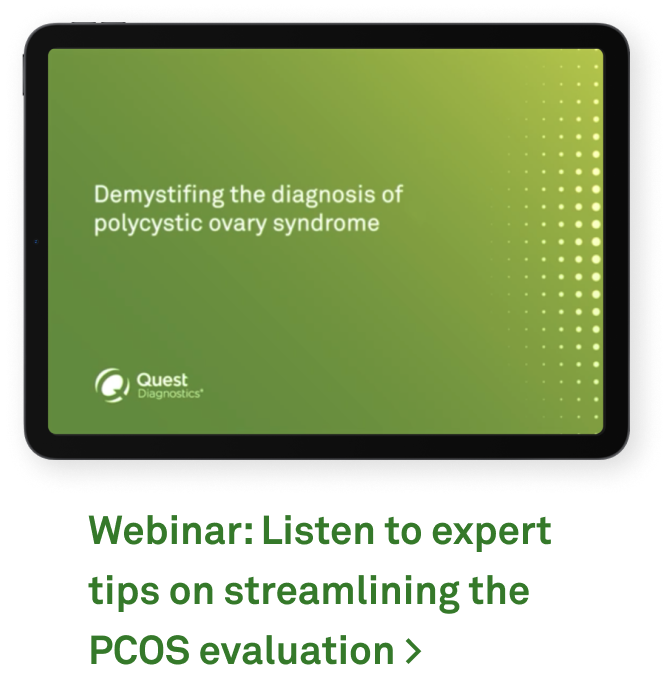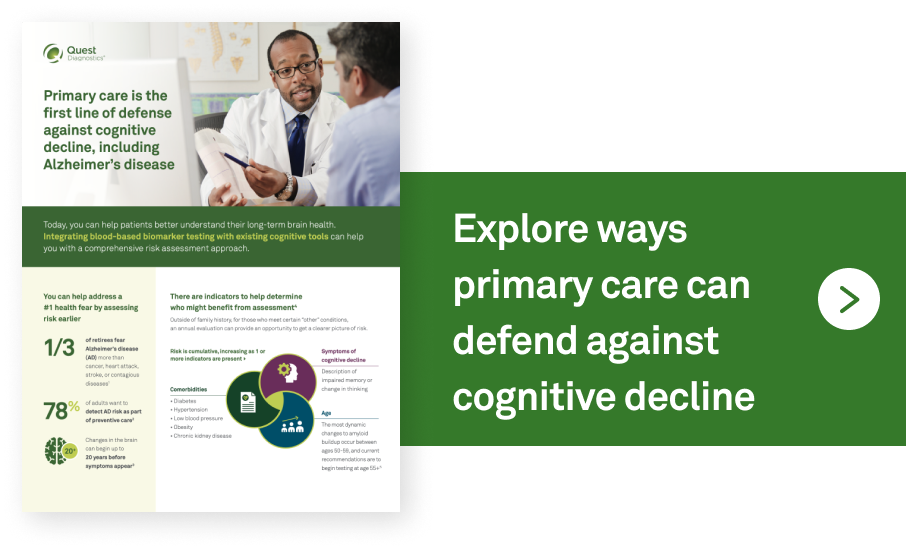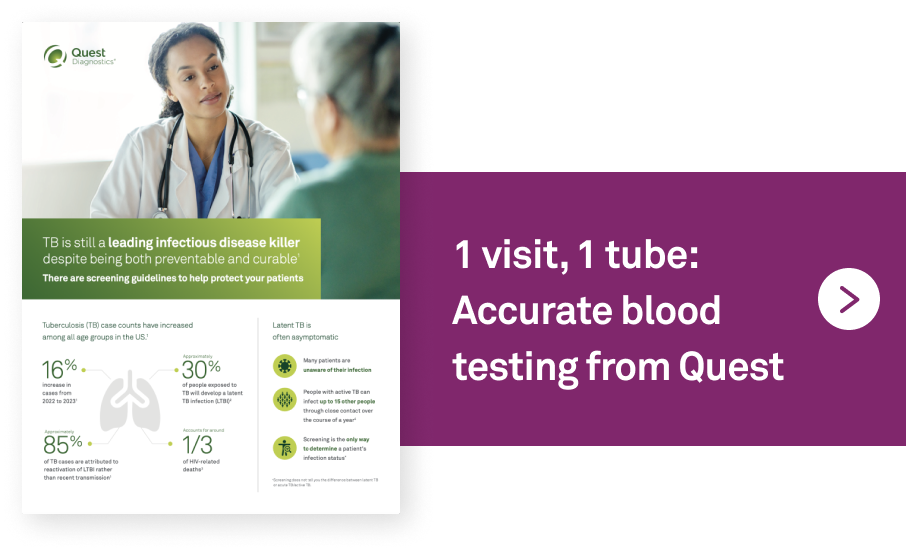September 2024

Discoveries, trends, and discussions in diagnostics
1) National Sexual Health Awareness Month
3) Primary care as the first line of defense against cognitive decline including Alzheimer's disease
4) Break the stigma and help prevent the spread of hepatitis, HIV, and tuberculosis
5) Respiratory molecular combination testing that helps you know more, sooner
|
|
National Sexual Health Awareness Month |
|
|
National Sexual Health Awareness Month |
|
|
National Sexual Health Awareness Month |
National Sexual Health Awareness Month |
Sexual health is fundamental to overallhealth and well-being
Each September, National Sexual Health Awareness Month provides an ideal opportunity to assess patient sexual health and help them understand their risk. Discussing sexual health can be uncomfortable for patients, so some conditions may remain undiagnosed, leading to significant health issues.
This is exacerbated by a major increase in sexually transmitted infections (STIs)1—more than 2.5 million cases of syphilis, gonorrhea, and chlamydia were reported in the US in 2022.2 The surge in syphilis cases is particularly alarming, increasing 80% between 2018-2022.2



|
Better outcomes |
Better outcomes |
Demystifying PCOS diagnoses with a step-by-step method and diagnostic algorithm
Primary care as the first line of defense against cognitive decline including Alzheimer's disease
Break the stigma and help prevent the spread of hepatitis, HIV, and tuberculosis

|
Better experiences |
Better experiences |
Respiratory molecular combination testing that helps you know more, sooner

|
Removing traditional barriers to testing |

|
Removing traditional barriers to testing |
Removing traditional barriers to testing |
TB blood testing: An easier way to test for tuberculosis
Achieving the Quadruple Aim in your practice
About Diagnostics Dialogue
- WHO. New report flags major increase in sexually transmitted infections, amidst challenges in HIV and hepatitis. May 21, 2024. Accessed July 22, 2024. https://www.who.int/news/item/21-05-2024-new-report-flags-major-increase-in-sexually-transmitted-infections---amidst-challenges-in-hiv-and-hepatitis
- CDC. CDC’s 2022 STI Surveillance Report underscores that STIs must be a public health priority. Updated January 30, 2024. Accessed July 26, 2024. https://www.cdc.gov/std/statistics/2022/default.htm
- Azziz R. Polycystic ovary syndrome. Obstet Gynecol. 2018;132(2):321-336. doi:10.1097/AOG.0000000000002698
- CDC. Diabetes and polycystic ovary syndrome (PCOS). May 15, 2024. Accessed March 29, 2023. https://www.cdc.gov/diabetes/risk-factors/pcos-polycystic-ovary-syndrome.html
- Escobar-Morreale HF. Polycystic ovary syndrome: definition, etiology, diagnosis and treatment. Nat Rev Endocrinol. 2018;14(5):270-284.doi:10.1038/nrendo.2018.24
- WHO. Polycystic ovary syndrome. June 28, 2023. Accessed July 22, 2024. https://www.who.int/news-room/fact-sheets/detail/polycystic-ovary-syndrome
- Quest Diagnostics. The Coming Alzheimer’s Disease Healthcare Revolution: US Physician and Adult Perspectives on the Future of Diagnostics and Treatment. May 2022. Accessed July 1, 2024. https://www.questdiagnostics.com/content/dam/corporate/brochure-pdfs/The-Coming-Alzheimer%27s-Disease-Healthcare-Revolution-Survey-Report.PDF
- Edward Jones. The four pillars of the new retirement. 2021. Accessed May 22, 2024. https://www.edwardjones.com/sites/default/files/acquiadam/2021-01/Edward-Jones-4-Pillars-USreport.pdf
- Nakamura A, Kaneko N, Villemagne V, et al. High performance plasma amyloid-B biomarkers for Alzheimer’s disease. Nature. 2018;554(7691):249-254. doi:10.1038/nature25456
- CDC. Global viral hepatitis: millions of people are affected. Updated July 19, 2021. Accessed November 17, 2023. https://www.cdc.gov/hepatitis/global/index.html
- CDC. Clinical testing and diagnosis for hepatitis B. March 6, 2024. Accessed July 11, 2024. https://www.cdc.gov/hepatitis-b/hcp/diagnosis-testing/index.html
- CDC. Clinical testing guidance for HIV. April 24, 2024. Accessed June 25, 2024. https://www.cdc.gov/hivnexus/hcp/diagnosis-testing/index.html
- HIV.gov. Who should get tested? Updated March 6, 2023. Accessed July 12, 2024. https://www.hiv.gov/hiv-basics/hiv-testing/learn-about-hiv-testing/who-should-get-tested
- US Preventive Services Task Force. Screening for latent tuberculosis infection in adults: US Preventive Services Task Force Recommendation Statement. JAMA. 2023;329(17):1487-1494. doi:10.1001/jama.2023.4899
- CDC. Current epidemic growth status (based on Rt) for states and territories. Updated July 19, 2024. Accessed July 22, 2024. https://www.cdc.gov/forecast-outbreak-analytics/about/rt-estimates.html
- CDC. Underlying conditions and the higher risk for severe COVID-19. June 14, 2024. Accessed July 29, 2024. https://www.cdc.gov/covid/hcp/clinical-care/underlying-conditions.html
- CDC. Flu treatment. Updated March 22, 2024. Accessed July 26, 2024. https://www.cdc.gov/flu/treatment/
- CDC. RSV. Updated December 18, 2020. Accessed October 20, 2022. https://www.cdc.gov/rsv/index.html
- Williams PM, Pratt RH, Walker WL, et al. Tuberculosis—United States, 2023. MMWR Morb Mortal Wkly Rep 2024;73:265–270. doi:10.15585/mmwr.mm7312a4
- Caruso E, Mangan JM, Maiuri A, et al. Tuberculosis testing and latent tuberculosis infection treatment practices among health care providers – United States, 2020-2022. MMWR. 2023;72(44);1183-1189. https://www.cdc.gov/mmwr/volumes/72/wr/mm7244a2.htm







